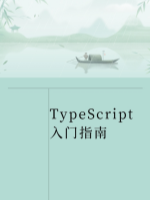33 | 组件与类型(1):函数组件与类组件
在React与TypeScript的联合开发实践中,组件是构建用户界面的基石。组件允许我们将UI拆分成独立、可复用的部分,每个部分都负责渲染页面的一部分。TypeScript的加入,为React组件提供了强大的类型检查和智能提示能力,使得代码更加健壮、易于维护。本章节将深入探讨React中的两种基本组件类型:函数组件与类组件,并展示如何在TypeScript环境下使用它们。
3.1 函数组件基础
函数组件是React中最简单的组件形式,它本质上是一个JavaScript函数,该函数接受props(属性)作为输入,并返回React元素作为输出。在TypeScript中,我们可以通过为函数组件添加类型注解来增强其类型安全性。
3.1.1 函数组件的定义
一个基本的函数组件示例如下:
import React from 'react';interface WelcomeProps {name: string;enthusiasmLevel?: number; // 可选属性,默认为1}// 使用函数签名定义组件类型const Welcome: React.FC<WelcomeProps> = ({ name, enthusiasmLevel = 1 }) => {if (enthusiasmLevel <= 0) {throw new Error('You could be a little more enthusiastic. :-D');}const exclamationMarks = Array(enthusiasmLevel + 1).join('!');const greeting = `Hello, ${name}${exclamationMarks}`;return <h1>{greeting}</h1>;};export default Welcome;
在上述代码中,Welcome是一个函数组件,它使用了TypeScript的接口WelcomeProps来定义props的类型。同时,通过React.FC<WelcomeProps>为函数组件添加了类型注解,其中FC是FunctionComponent的缩写,它是React定义的一个泛型类型,用于描述函数组件的props类型、children类型等。
3.1.2 函数组件的props与children
在函数组件中,props和children是两个重要的概念。props是传递给组件的数据,而children是组件的子元素。在TypeScript中,可以通过接口或类型别名来定义props的结构,而children通常会自动推断为ReactNode类型(一个可以表示React元素的类型)。
interface PropsWithChildren {title: string;children: React.ReactNode; // 允许children为React元素或字符串等}const Section: React.FC<PropsWithChildren> = ({ title, children }) => (<div><h2>{title}</h2>{children}</div>);
3.2 类组件基础
与函数组件不同,类组件是继承自React.Component或React.PureComponent(一个优化版本的Component,用于避免不必要的渲染)的ES6类。类组件允许你使用更多的特性,如状态(state)和生命周期方法。
3.2.1 类组件的定义
下面是一个简单的类组件示例,它使用TypeScript定义:
import React, { Component } from 'react';interface CounterState {count: number;}class Counter extends Component<{}, CounterState> {// 初始化状态state: CounterState = {count: 0};// 更新计数的方法increment = () => {this.setState(prevState => ({count: prevState.count + 1}));};render() {return (<div><p>You clicked {this.state.count} times</p><button onClick={this.increment}>Click me</button></div>);}}export default Counter;
在这个例子中,Counter是一个类组件,它没有使用任何props(因此props类型被留空),但拥有自己的状态count。我们通过在类体中定义state属性和increment方法来管理组件的状态和行为。注意,在类组件中,更新状态应使用this.setState方法,该方法接受一个函数,该函数返回新状态,以支持基于当前状态更新状态。
3.2.2 生命周期方法
类组件支持一系列的生命周期方法,这些方法在组件的不同阶段被调用,允许你执行如数据获取、副作用处理等操作。TypeScript为这些生命周期方法提供了类型注解,确保你正确地使用了它们。
class MyComponent extends Component<MyProps, MyState> {componentDidMount() {// 组件挂载后立即执行,常用于数据获取}shouldComponentUpdate(nextProps: MyProps, nextState: MyState) {// 返回一个布尔值,决定是否重新渲染组件// 可以通过比较props和state来优化性能return true; // 示例,总是重新渲染}componentDidUpdate(prevProps: MyProps, prevState: MyState) {// 组件更新后立即执行,可用于访问DOM}// 其他生命周期方法...}
3.3 函数组件与类组件的比较
函数组件和类组件各有优缺点,选择哪一种取决于你的具体需求和偏好。
函数组件:
- 编写简单,易于理解。
- 适用于大多数情况,特别是当组件不需要状态或生命周期方法时。
- 随着Hooks(如
useState、useEffect)的引入,函数组件现在能够使用状态和其他React特性。 - 更好的性能(在大多数情况下),因为函数组件不需要实例化。
类组件:
- 提供更多的灵活性和控制,特别是通过状态和生命周期方法。
- 对于需要复杂逻辑或继承的组件来说,类组件可能更合适。
- 但是,随着Hooks的普及,类组件的一些优势正在减弱。
3.4 实战建议
- 优先考虑函数组件:在大多数情况下,推荐使用函数组件,因为它们更简单、更轻量级,且易于测试。
- 利用Hooks:如果你的函数组件需要状态或副作用,考虑使用Hooks来增强它们,而不是转向类组件。
- 评估性能:虽然函数组件通常性能更好,但在某些情况下(如大量使用Context或Hooks),类组件可能更合适。始终根据实际应用场景评估性能。
- 保持更新:React和TypeScript都在不断发展,关注最新的最佳实践和API变化,以优化你的组件开发体验。
通过本章节的学习,你应该对React中的函数组件与类组件有了更深入的理解,并掌握了在TypeScript环境下使用它们的基本方法。无论是选择函数组件还是类组件,重要的是要理解它们各自的优势和适用场景,以便在项目中做出合理的选择。



